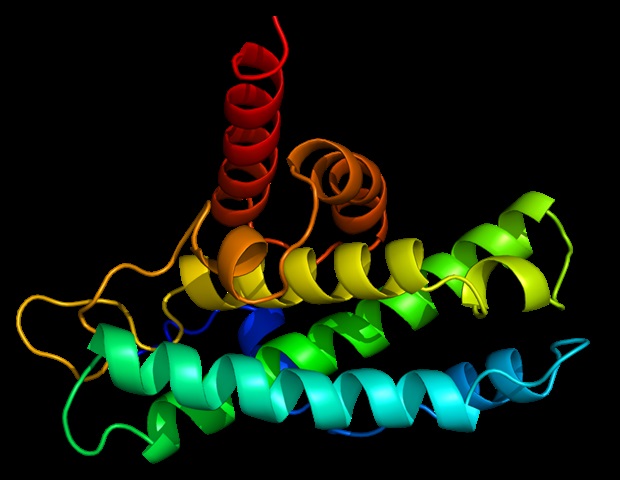Health
Study Unveils Enzyme-like Role of Protein Plaques in Neurodegeneration

A recent study conducted by researchers at Rice University has revealed a groundbreaking function of protein plaques associated with neurodegenerative diseases. Led by Pernilla Wittung-Stafshede, the research demonstrates that these clumps, primarily composed of the protein alpha-synuclein, actively deplete energy from brain cells by breaking down adenosine triphosphate (ATP), the critical energy currency of cells. Published in Advanced Science on October 16, 2023, the findings could significantly alter the understanding of the mechanisms behind diseases such as Parkinson’s and Alzheimer’s.
The study highlights that rather than being inert waste, the amyloid clumps can function similarly to enzymes. When ATP binds to these plaques, the alpha-synuclein protein reshapes itself to trap ATP in a pocket, leading to the breakdown of the molecule and the release of energy. Wittung-Stafshede expressed surprise at this discovery, stating, “We were astonished to see that amyloids, long thought to be inert waste, can actively cleave ATP.”
Research Methodology and Insights
To investigate these protein aggregates, the researchers created uniform clumps of alpha-synuclein in a laboratory setting. Initially, they examined whether these aggregates could break down simpler chemical compounds before progressing to ATP. The results confirmed that the clumps could indeed accelerate ATP breakdown.
Utilizing advanced imaging techniques, specifically cryo-electron microscopy, the team collaborated with experts from ETH Zürich to visualize the structural changes in the protein clumps upon ATP binding. Their findings revealed that a flexible segment of the protein folds over the ATP binding site, forming a pocket lined with positive charges. This transformation is critical, as it allows the passive aggregates to become reactive and enzymatic in nature.
To validate their claims, the researchers systematically modified the protein, removing the positive charges in the pocket. The modified variants formed clumps but failed to break down ATP, underscoring the importance of this specific structure for the reaction.
Implications for Neurodegenerative Diseases
These findings suggest that protein clumps in the brain may pose a greater threat than previously understood. The ability of alpha-synuclein aggregates to break down ATP could disrupt vital cellular functions, including those that facilitate the removal of these plaques. This disruption may allow the clumps to evade the body’s natural cleaning mechanisms, exacerbating the progression of neurodegenerative diseases.
The study also opens avenues for potential therapeutic interventions. If researchers can develop small molecule drugs that stabilize the clumps in non-reactive forms, it could mitigate their detrimental effects. Wittung-Stafshede remarked, “We want to learn how to stop neurodegenerative diseases at the source, directly detoxifying damaging species, instead of just treating symptoms as we do today.”
Additionally, the research implies that natural substances within the brain may influence the structural variations of protein clumps in patients, possibly accounting for the distinct shapes observed in different neurodegenerative disorders.
To further explore the chemical reactivity of these amyloids in real brain cell environments, the researchers introduced extracts from neuronal cells to the protein clumps. The results indicated that numerous compounds in the mixture underwent chemical changes, highlighting the potential impact of the clumps on various cellular molecules beyond ATP.
If these findings hold true in living cells, they could illuminate the reasons behind energy shortages, DNA damage, and other forms of chemical stress faced by brain cells in conditions like Alzheimer’s and Parkinson’s disease. As these disorders become increasingly prevalent with an aging global population, uncovering new underlying mechanisms such as this enzymatic activity may pave the way for enhanced treatments or even preventive measures.
Wittung-Stafshede’s team included co-authors Lukas Frey and Roland Riek from ETH Zürich, along with Fiamma Ayelen Buratti, Istvan Horvath, Shraddha Parate, and Ranjeet Kumar from Chalmers University of Technology. The research received support from various funding bodies, including the Knut and Alice Wallenberg Foundation, the Swedish Research Council, the Swiss National Science Foundation, and the Synapsis Foundation Switzerland.
This significant study not only advances the understanding of protein clumps in neurodegeneration but also sets the stage for future research aimed at combating these debilitating diseases.
-

 Health2 months ago
Health2 months agoNeurologist Warns Excessive Use of Supplements Can Harm Brain
-

 Health2 months ago
Health2 months agoFiona Phillips’ Husband Shares Heartfelt Update on Her Alzheimer’s Journey
-

 Science2 days ago
Science2 days agoBrian Cox Addresses Claims of Alien Probe in 3I/ATLAS Discovery
-

 World2 months ago
World2 months agoCole Palmer’s Cryptic Message to Kobbie Mainoo Following Loan Talks
-

 Entertainment3 months ago
Entertainment3 months agoLove Island Star Toni Laite’s Mother Expresses Disappointment Over Coupling Decision
-

 Entertainment3 months ago
Entertainment3 months agoEmmerdale Faces Tension as Dylan and April’s Lives Hang in the Balance
-

 Entertainment2 months ago
Entertainment2 months agoMajor Cast Changes at Coronation Street: Exits and Returns in 2025
-

 Entertainment3 months ago
Entertainment3 months agoKerry Katona Discusses Future Baby Plans and Brian McFadden’s Wedding
-

 Lifestyle2 months ago
Lifestyle2 months agoEngland Flags Spark Controversy This Summer: A Cultural Debate
-

 Entertainment2 months ago
Entertainment2 months agoMasterChef Faces Turmoil as Tom Kerridge Withdraws from Hosting Deal
-

 World4 weeks ago
World4 weeks agoMassive Sinkhole Opens in Bangkok, Swallowing Cars and Causing Chaos
-

 World1 month ago
World1 month agoMichelle Tsiakkas Opens Up About Jamie Borthwick Before BBC Exit









